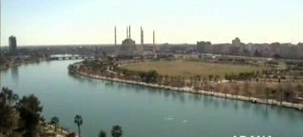Shape of river
All great rivers develop the same horseshoe-shaped meanders in their lower reaches .Length of rivers
Measurements of river lengths vary according to where the river is said to begin.Longest river of the world(America’s amazone)
America’s Amazon is longest river of the world .The source of the Amazon was only discovered in 1971, in snowbound lakes high in the Andes. It is named Laguna McIntyre after the American who found it. If the full length of the Amazon is counted, it is 6750 km long2nd longest river (Africa’s Nile)
It is the world’s second longest river As compared with the Nile at 6670 km.The Amazon basin covers more than 7 million sq km. China’s Yangtse It is the third longest river, at 6300 km. |
| Seyhan River in Adana turkey |
The world’s longest tributary
The world’s longest tributary is the Madeira flowing into the Amazon. At 3380 km long it is the 18th longest river in the world.Ob in Russia
The world’s longest estuary is that of the Ob in Russia, which is up to 80 km wide and 885 km long. The Ob is the biggest river to freeze solid in winter.Roe River in Montana
The shortest official river is the North Fork Roe River in Montana, USA, which is just 17.7 m long. Rivers are filled with water from rainfall running directly off the land, from melting snow or ice or from a spring bubbling out water that is soaked into the ground.High up in mountains near their source (start), rivers are usually small. They tumble over rocks through narrow valleys which they carved out over thousands of years. Catchment area All the rivers in a certain area, called a catchment area, flow down to join each other, like branches on a tree.
Post a Comment